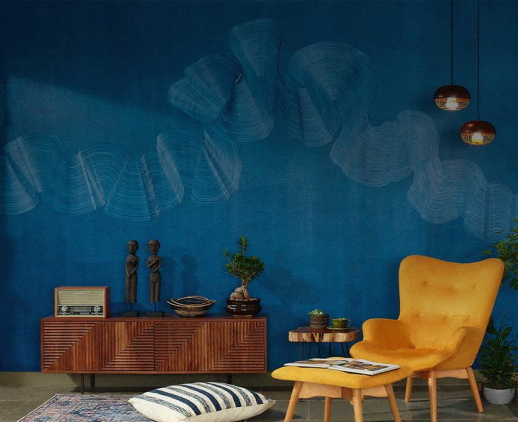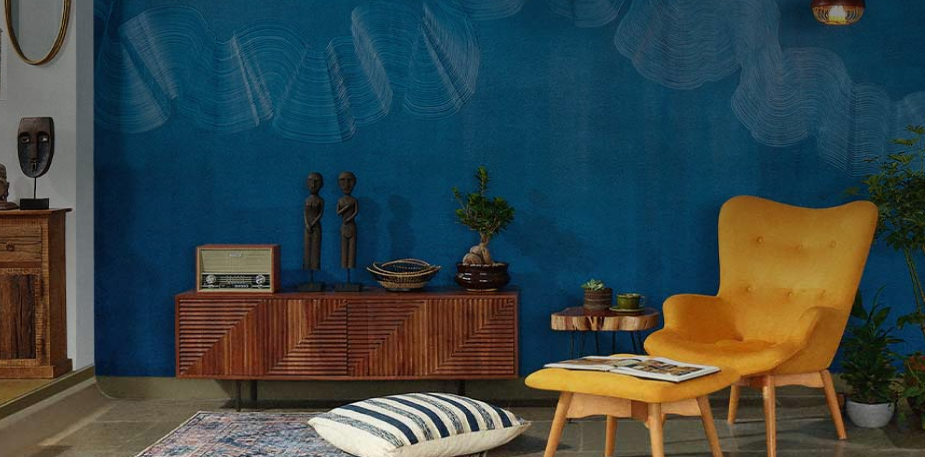Get your home interior design budget estimate
Festive Entertaining Part 2: Create an Indian festive tablescape

Chef Bani Nanda suggests mixing and matching textiles, ceramics and colours for your table setting this Diwali
When the world went into lockdown last year, most of us stepped into our kitchens and started baking banana bread and garden focaccia. But when you’re a pastry chef who spends her day elbow-deep in flour, butter, and sugar to create flaky laminated dough and layered entremets— well, banana bread doesn’t hold much charm.
Instead, Chef Bani Nanda, the founder of Miam Patisserie in Delhi, discovered a passion for table setting during her time in. It began with a birthday party she hosted at home last year—and has continued since.
“My birthday is in July and in June I did a bunch of crockery shopping. I did a lot of online shopping and put together a mood board for a dinner at home. My intent was to just focus on my birthday table, but I’ve been doing it for a year and a half now!”
Her friends-and-family birthday dinner was a starting point. Since then, she’s created dozens of images and videos of colourful tables, sharing it all with her every-growing Instagram family.
Bani’s table settings stand apart because they are both beautiful and attainable, with a focus on Indian crafts and everyday objects that have been upcycled and used as décor. And she says that as the art of the gathering has evolved, most Mad Men-era rules no longer apply. Here, she shares a detailed list of the essentials, dos, and don’ts to set an inspired table:
Starting Right: Table Linen
Bani says she usually starts with the table linen. “My focus first goes on the tablecloth or the mat. Then I like to pick out colours and sort of bring it together. Then I’ll pick out other pieces—it could be the dinner plates, for example—I’ll pick out that one element and build the table keeping that as a reference point.”
Table linen isn’t something Indian home and décor brands pay a lot of attention to, since a tablecloth is a more Western concept and Indian textiles focus more on fabric for clothes, rugs, shawls and quilts.
Bani’s tip: use reams of fabric, or dupattas, like she’s done here. For the Diwali table she styled, Bani used a vintage pre-partition phulkari dupatta that’s over 100 years old. Colour is key for any table setting, and she says that a dupatta is the best way to add colour on a budget. “Table linen is something Indian handloom doesn’t have—because we don’t have table etiquette as such. But Indian handloom makes lots of saris and dupattas and they can be easily upcycled for a table setting.”
The phulkari dupatta she’s used here (from Phulkari Dupatta House in New Delhi) has bright orange and magenta embroidery against a maroon base, which pairs perfectly with terracotta.

Cloth napkins can add an element of sophistication to any table.
“I thought of phulkari because it is traditional and has deep roots with Punjab-Sindh in Pakistan. My mom wore phulkari for her mehndi, and it just felt right for a festive table.”

When mixing prints, make sure that the colours and patterns have a similar sensibility. Here, Bani has placed a printed plate with earthy tones alongside whites, terracotta and woven baskets.
The Next Step: Choosing your Ceramics
Bani believes the key is to invest in fewer, better things. “Initially, I’d keep ordering random things off Amazon. Then, I started researching more and discovered some great local brands and ceramic artists.”
Inexpensive but pretty-looking ceramics have flooded the market and can be purchased from roadside vendors and at exhibitions. But Bani says most small potters and ceramic artists (a majority of whom are based in Khurja, Uttar Pradesh) are forced to scale up and compromise on quality to deliver in a short span of time. Bani prefers buying from artisans and potters who craft things by hand, and with care. After visiting Atelier Lālmitti in Andretta village near Dharamshala, she has a newfound respect for the process. The time spent in the oven, the quality of clay and paints used—all these make a difference, and she feels it’s better to invest in artists who use the best materials and techniques.
According to her the days of the 90-piece dinner set are long gone—so you can buy what you like, when you like, and make it work!
Mixing and Matching: How Much is Too Much?
Most tableware and crockery companies—even established names like Villeroy & Boch—aren’t manufacturing large sets like they used to, so Bani says it’s best to buy individual pieces from different brands and use them together. “Our parents’ generation had a very dated outlook— they would buy a whole dinner set with plates, quarter plates, and bowls and use it for years. Most of the newer brands don’t put out entire sets.”
Bani is all for mixing and matching: but while maintaining a general aesthetic. “Just make sure your patterns and colours make sense. Terracotta and clay are natural materials and can be paired with a bunch of things. Too many patterns can clash, so choose wisely. And I would say avoid mixing metal and ceramic or metal and melamine.”
She has a few trusty Le Creuset pieces in off-white, which fit with anything and double up as cook-and-serve pieces for all kinds of cuisine. For the table she’s styled here, she’s paired her Le Creuset cookware with terracotta, a bright dupatta, and flowers placed in traditional “bharanis” or pickling jars. All very different styles, but the shades, textures and finishes complement each other and make for a very well put-together table.

Glassware is neutral and can be combined with a variety of colours and textures.
Plus, the “matching” concept is a Western one, says Bani. Indians have never had hard and fast rules related to table etiquette largely because it was an ideal brought in with the British colonisers. “If you look back, earlier generations would sit on the floor and eat together. Indian food is more communal—and I set the table accordingly.”
Her major dos and don’ts:
- Do look for natural materials like terracotta, earthenware, and glassware.
- Don’t go crazy with prints and patterns—for example, don’t mix a big print with a small one, or an Aztec print with paisley or ethnic Indian prints!
Final Flourish: No-Stress Centrepieces
Centrepieces can be confusing and intimidating—but you don’t need a large one, or a complicated one, or the skills of Martha Stewart, to pull it off!

Fresh flowers always brighten up a table. Here, Bani has used placed available flowers in traditional pickling jars which complement the off-white and terracotta pieces.
Bani’s go-to is a simple floral arrangement. While she prefers entertaining in her garden, she says that adding flowers and leaves is a way of bringing the outside in, if you are serving food indoors.
“You can just go out to you garden and cut a few leaves off plants and trees and arrange them aesthetically. Bougainvillea grows abundantly all over—pick up a few fallen flowers from the local park or your garden.” She says you don’t need to worry about vases, or a lack thereof. She often uses jars (like the bharani pictured here) as bud vases. She also recommends using winnowing baskets as centrepieces. The same baskets that are used to store potatoes and garlic can be wiped down and used as a centrepiece for flowers.
Candles are another favourite with Bani, especially tea lights. And she says you can upcycle everyday objects around the house and use them as votives. “A nice matka, an engraved brass katori, a coloured drinking glass—you can put a tea light in any of these objects and place them on the table.”
For Bani, it’s about using seemingly mundane objects in an innovative way to create a welcoming environment. And we’re pretty sure that with her pointers, you can take your festive table from everyday to elegant effortlessly.

Get Started with your interior design journey with us!
Speak to our design professionals
What’s the status of your home possession?
What’s the condition of your home/space?
Will you be living in your space during the renovation?
 Previous Question
Previous Question
Is your interior design budget over 4 lakhs?
 Previous Question
Previous Question
Book next available appointment slots with our experts!
Please Select Date and Day
 Previous Question
Previous Question

Something went wrong!
We were unable to receive your details. Please try submitting them again.

Appointment Scheduled!
Thank you for giving an opportunity to Asian Paints Beautiful Homes Service! Our Customer Experience Specialist will get in touch with you soon.
Appointment Date & time
Thank You!
Our team will contact you for further details.
What’s the status of your home possession?
What’s the condition of your home/space?
Will you be living in your space during the renovation ?
 Previous Question
Previous Question
Is your interior design budget over 4 lakhs?
 Previous Question
Previous Question
Book next available appointment slots with our experts!
DEC 2023
Please Select Date and Day
 Previous Question
Previous Question

Something went wrong!
We were unable to receive your details. Please try submitting them again.

Appointment Scheduled!
Thank you for giving an opportunity to Asian Paints Beautiful Homes Service! Our Customer Experience Specialist will get in touch with you soon.
Appointment Date & time
17 Oct 23, 03.00PM - 04.00PM






































